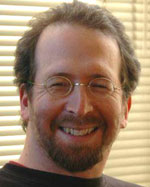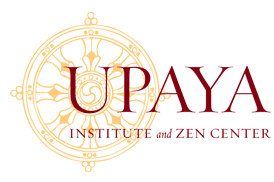TWELVE TRAPS TO AVOID
1. The Issue Trap. We hear it said all the time: Progressives won’t unite behind any set of ideas. We all have different ideas and care about different issues. The truth is that progressives do agree at the level of values and that there is a real basis for progressive unity. Progressive values cut across issues. So do principles and forms of argument. Conservatives argue conservatism, no matter what the issue. Progressives should argue progressivism. We need to get out of issue silos that isolate arguments and keep us from the values and principles that define an overall progressive vision.
2. The Poll Trap. Many progressives slavishly follow polls. The job of leaders is to lead, not follow. Besides, contrary to popular belief, polls in themselves do not present accurate empirical evidence. Polls are only as accurate as the framing of their questions, which is often inadequate. Real leaders don’t use polls to find out what positions to take; they lead people to new positions.
3. The Laundry List Trap. Progressives tend to believe that people vote on the basis of lists of programs and policies. In fact, people vote based on values, connection, authenticity, trust, and identity.
4. The Rationalism Trap. There is a commonplace—and false—theory that reason is completely conscious, literal (applies directly to the objective world), logical, universal, and unemotional. Cognitive science has shown that every one of these assumptions is false. These assumptions lead progressives into other traps: assuming that hard facts will persuade voters, that voters are “rational” and vote in their self-interest and on the issues, and that negating a frame is an effective way to argue against it.
5. The No-Framing-Necessary Trap. Progressives often argue that “truth doesn’t need to be framed” and that the “facts speak for themselves.” People use frames—deep-seated mental structures about how the world works—to understand facts. Frames are in our brains and define our common sense. It is impossible to think or communicate without activating frames, and so which frame is activated is of crucial importance. Truths need to be framed appropriately to be seen as truths. Facts need a context.
6. The Policies-Are-Values Trap. Progressives regularly mistake policies with values, which are ethical ideas like empathy, responsibility, fairness, freedom, justice, and so on. Policies are not themselves values, though they are, or should be, based on values. Thus, Social Security and universal health insurance are not values; they are policies meant to reflect and codify the values of human dignity, the common good, fairness, and equality.
7. The Centrist Trap. There is a common belief that there is an ideological “center”—a large group of voters either with a consistent ideology of their own or lined up left to right on the issues or forming a “mainstream,” all with the same positions on issues. In fact, the so-called center is actually made up of biconceptuals, people who are conservative in some aspects of life and progressive in others. Voters who self-identify as “conservative” often have significant progressive values in important areas of life. We should address these “partial progressive” biconceptuals through their progressive identities, which are often systematic and extensive.
A common mistaken ideology has convinced many progressives that they must “move to the right” to get more votes. In reality, this is counterproductive. By moving to the right, progressives actually help activate the right’s values and give up on their own. In the process, they also alienate their base.
8. The “Misunderestimating” Trap. Too many progressives think that people who vote conservative are just stupid, especially those who vote against their economic self-interest. Progressives believe that we only have to tell them the real economic facts, and they will change the way they vote. The reality is that those who vote conservative have their reasons, and we had better understand them. Conservative populism is cultural—not economic—in nature. Conservative populists see themselves as oppressed by elitist liberals who look down their noses at them, when they are just ordinary, moral, right-thinking folks. They see liberals as trying to impose an immoral “political correctness” on them, and they are angry about it.
Progressives also paint conservative leaders as incompetent and not very smart, based on a misunderstanding of the conservative agenda. This results from looking at conservative goals through progressive values. Looking at conservative goals through conservative values yields insight and shows just how effective conservatives really are.
9. The Reactive Trap. For the most part, we have been letting conservatives frame the debate. Conservatives are taking the initiative on policy making and getting their ideas out to the public. When progressives react, we echo the conservative frames and values, so our message is not heard or, even worse, reinforces their ideas. Progressives need a collection of proactive policies and communication techniques to get our own values out on our own terms. “War rooms” and “truth squads” must change frames, not reinforce conservative frames. But even then, they are not nearly enough. Progressive leaders, outside of any party, must come together in an ongoing, long-term, organized national campaign that honestly conveys progressive values to the public—day after day, week after week, year after year, no matter what the specific issues of the day are.
10. The Spin Trap. Some progressives believe that winning elections or getting public support is a matter of clever spin and catchy slogans—what we call “surface framing.” Surface framing is meaningless without deep framing—our deepest moral convictions and political principles. Framing, used honestly at both the deep and surface levels, is needed to make the truth visible and our values clear.
Spin, on the other hand, is the dishonest use of surface linguistic frames to hide the truth. And progressive values and principles—the deep frames—must be in place before slogans can have an effect; slogans alone accomplish nothing. Conservative slogans work because they have been communicating their deep frames for decades.
11. The Policyspeak Trap. Progressives consistently use legislative jargon and bureaucratic solutions, like “Medicare prescription drug benefits,” to speak to the public about their positions. Instead, progressives should speak in terms of the common concerns of voters—for instance, how a policy will let you send your daughter to college, or how it will let you launch your own business.
12. The Blame Game Trap. It is convenient to blame our problems on the media and on conservative lies. Yes, conservative leaders have regularly lied and used Orwellian language to distort the truth, and yes, the media have been lax, repeating the conservatives’ frames. But we have little control over that. We can control only how we communicate. Simply correcting a lie with the truth is not enough. We must reframe from our moral perspective so that the truth can be understood. This reframing is needed to get our deep frames into public discourse. If enough people around the country honestly, effectively, and regularly express a progressive vision, the media will be much more likely to adopt our frames.















